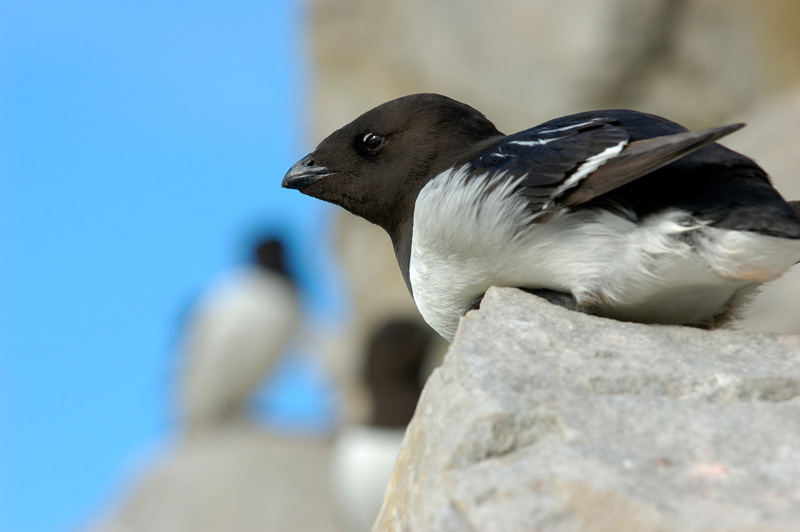Hornsund's wildlifeBy Øystein Overrein
You can register your observations of marine mammals around Svalbard in the Norwegian Polar Institute’s database Marine Mammals Sightings. With regards to birdlife, Hornsund is mainly the domain of the little auks, due to the large scree slopes – their typical nesting habitat. With abundant plankton and crustaceans, Hornsund and the areas off the west coast represent a giant food reservoir for the little auk. The West Spitsbergen Current – a branch of the Gulf Stream – brings temperate waters north along the western Spitsbergen coast and provides favourable conditions for biological production in the area. Northern fulmar can be seen in several colonies in Hornsund, including Gnålodden/Sofiekammen, Luciapynten in Burgerbukta and Krykkjestupet, close to Gåshamna. Brünnich’s guillemot and kittiwake nest at the same locations. Dunøyane and Isøyane are important nesting areas for barnacle geese, and the islands were protected as bird sanctuaries back in 1973. Dunøyanen and Isøyane are also Ramsar sites , which means they are protected by the Convention on Wetlands, signed in 1971, and they are on the Ramsar List of Wetlands of International Importance. The sanctuaries and the strand flats on the west coast are important migrating localities for barnacle geese, pink-footed geese and brent geese. Pink-footed geese nest in large numbers on Dunøyane and on scree slopes and hillsides close to the sea, including in Hyttevika north of Hornsund and Gnålodden. In June, traffic in these areas can easily scare birds off the nest and leave the eggs unprotected and open for nest-plunderers like the glaucous gull and Arctic fox. Eider ducks nest in the sanctuaries and at most headlands and islets in the Hornsund area, including the islets off Gnålodden, at Hornsundneset, in Steinvika and Hyttevika. Glaucous gulls nest scatteredly in the area, but there are large colonies at Dunøyane. The Arctic tern nests in colonies in the two sanctuaries Dunøyane and Isøyane, and the little auk nests in several colonies between Nottinghambukta/Hyttevika and Hornsund/Burgerbukta in addition to at least three colonies on the south side of Hornsund – Hohenlohefjellet east of Gåshamna, and east of Samarinvågen. A huge colony of little auks is situated at Ariekammen (100,000 to 1 million individuals) and is probably the largest in Svalbard. If you have ever been close to such a large colony when the little auks are swarming you will never forget it. Several black guillemot colonies are found scattered in the area and the number of individuals is unknown. There are not many reindeer in the Hornsund area. The reindeer is mainly associated to the strand flats and valleys on the west coast and inside the fjords. The strand flats are important winter habitats, but are prone to icing (warm weather and above-zero temperatures, followed by cold weather), which makes food hard to reach. These episodes reduce reindeer numbers dramatically from time to time. The Hornsund area sustains a solid population of Arctic fox. Updated April 2009 |
The Cruise Handbook is also available in book formHard cover with numerous pictures - 249 pages - NOK 249.00 Norwegian Polar Institute |
 Norsk
Norsk